A Case Study for Produce Safety in Hydroponic and Aquaponic Operations
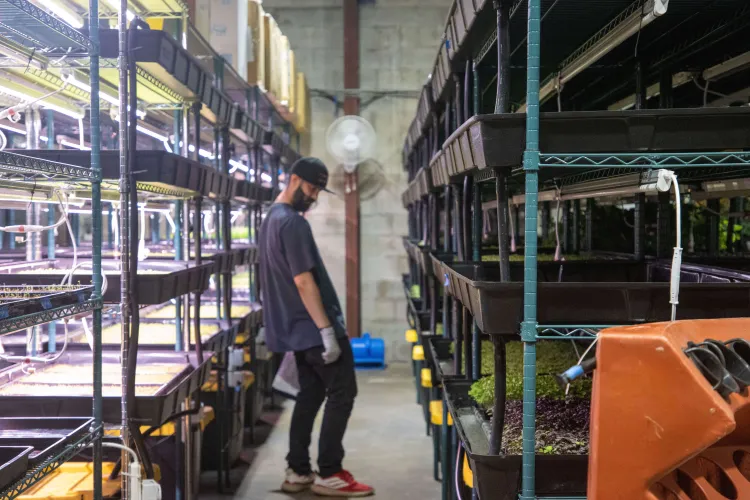
Written Case Study Sections
- Introduction
- Food Safety Culture
- Risk Reduction Practices
- Visitor Policies
- Greens Harvester
- Other Cleaning Practices
- Water Circulation System
- Water Reservoir Change
- Parting Thoughts
Videos
- Overview of Legacy Greens
- Produce Safety in Hydroponics: Legacy Greens
- Cleaning the Quick-Cut Greens Harvester
- Cleaning of the Water System AKA a "Rez Change"
Introduction
Jordan Miranda stumbled upon microgreens in 2020 during the COVID-19 pandemic. He started experimenting and growing out of a guest bedroom and quickly built an operation with 42 racks of production and 3 part time employees in a 3,000-sq ft warehouse in under 3 years.
Jordan got started in the medical cannabis industry which experienced rapid growth. He started as employee number 6 and ended up managing over 100 employees by the time he decided to start his own business 3.5 years later to break from the developing corporate culture. He earned a Bachelor of Arts in Environmental Science with a minor in Biology from Florida State University.
Now holding the title of “Cultivation Manager,” he reflects on his love of growing plants, particularly indoors. He says he likes it “because it’s cool! ...In my eyes, I see it as a major way that our food is going to be procured in the near future with climate change, food borne illnesses, etc. I see indoor farming as a major part of the big plan.” Luckily Jordan enjoys all the components of an indoor growing system including the HVAC, electrical, lighting, nutrients, systems, and structures.
Legacy Greens is run by the three Miranda brothers:
- Jordan - Younger brother, role is cultivation manager as mentioned above.
- Julian - Middle brother, also worked in medical cannabis, now fills gaps at Legacy Greens. Provides elementary schools with grow kit activities.
- Daniel - Older brother, studied mechanical engineering at Florida International University, entered the workforce in engineering sales and agreed to help Jordan once he saw he was onto something with his own business. He handles sales and marketing, and is the face of the company to chefs.
Overview of Legacy Greens
Julian Miranda shares how Legacy Greens is involved in the community and embraces a culture of produce safety at their indoor farm.
Food Safety Culture
When asked about the culture of food safety, Jordan noted, “Cleanliness is next to godliness. ...For us we take a lot of pride in what we're doing... the last thing we want to do is make someone sick.” They strive for high cleanliness standards and have embedded a produce safety mentally into the culture of their business. They address this right from the top when onboarding new employees and have policies that you come in with clean clothes, following all cleaning procedures, with handwashing a common practice. They also train employees not to work if they are sick, and to keep doors closed and only open as needed to minimize outside contaminants. You know you have a culture of food safety when the staff brings up potential issues they see!
Jordan is always trying to stay up the curve on all relevant regulations. He has his certificate from the Produce Safety Alliance Grower Training, but did not see himself completely in the training as an indoor grower. He asked questions but most trainers struggled to provide relevant answers since this course is structured toward outdoor farms and field-based production.
Produce Safety at Legacy Greens: Interview
Learn how Legacy Greens approaches produce safety at their indoor hydroponic farm.
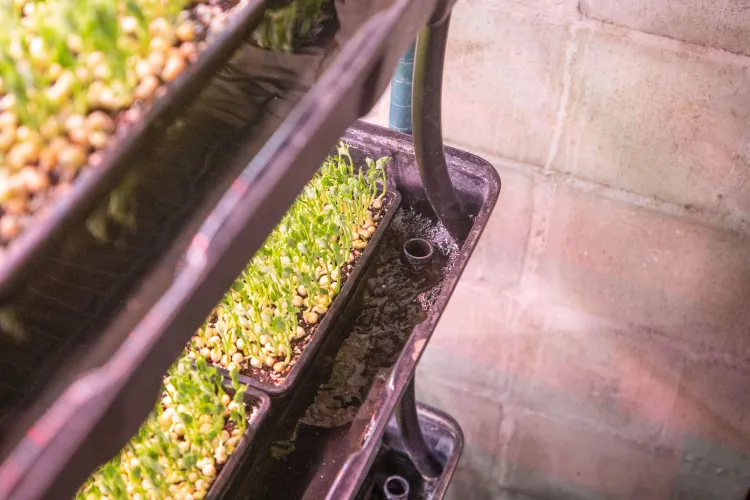
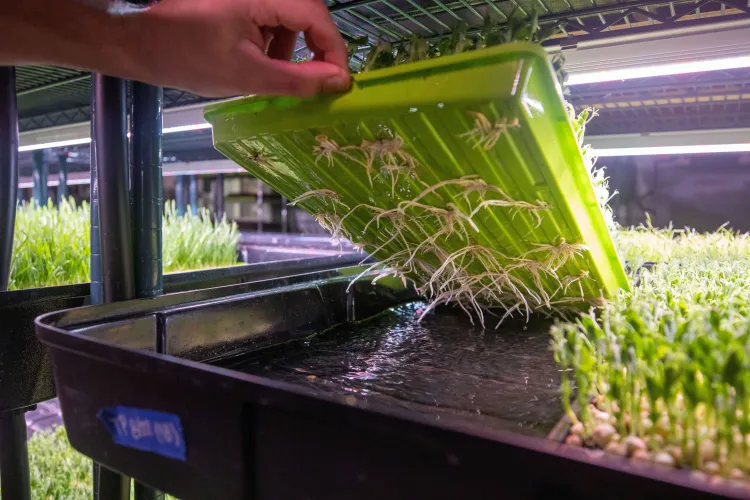
Risk Reduction Practices
- Not doing any postharvest washing - It is important to remember that postharvest rinsing/washing of produce doesn’t remove contamination and introduces water which needs to be managed for microbial quality.
- Identifying all food contact surfaces and emphasizing cleanliness as a priority with SOPs - This farm is diligent about their cleaning schedules which benefits production quality and food safety.
- Using EPA registered sanitizers - Legacy is using registered antimicrobial solutions only as directed on the product label.
- Eliminating hard to clean surfaces - A previous production practice included a hard to clean surface: a porous black harvest mat. The team opted for a different production method which eliminated this hard to clean part of their system.
- Using of cut resistant gloves when using the harvester - The team learned that they needed better gloves when using the harvester which has a sharp blade. The gloves are managed as a food contact surface.
The Legacy team shared one example of a produce safety risk which is somewhat unique to indoor production. When rat presence was detected in their warehouse-based production space, they called pest control. They blocked up holes, had traps set around entrances, and managed the traps. Since then, they have not seen any traces of rats around the food production.
Legacy Greens is expanding into an additional, new location. During the visit they shared that they will be using metal mesh in the construction of the corners and walls and insulating tightly with spray foam insulation, as well as outsourcing to a commercial pest management company for controlling their pests.
Visitor Policies
- Sign into the Visitors Log
- Use a hair covering hat or hair net
- Use foot sanitation mat upon entry
- Don't touch product or trays
- Can take pictures
Greens Harvester
At Legacy Greens, they use a Farmer’s Friend Quick Cut Greens Harvester mounted to a table for harvesting their microgreens. It gets cleaned thoroughly every day after use. Gloves generally aren’t worn except during harvesting. The team has adopted cut-resistant gloves. Gloves are managed as food contact surfaces. Handwashing remains a key practice to reduce the risk of hands becoming a source of produce contamination.
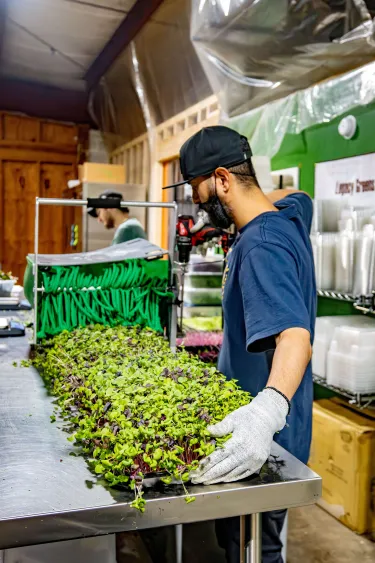
The cleaning steps are simple. They use a dedicated brush and scrub it down with simple green (a detergent), rinse it off, apply a sanitizer, and place it in front of a fan to continue drying out before the next use.
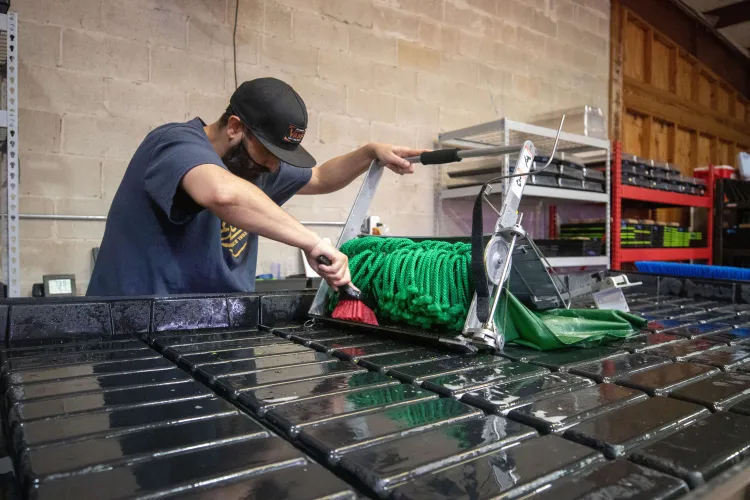
The black plastic surface being used for a cleaning station is an old production tray which is also easy to clean and sanitize. The tray also diverts all cleaning and rinsing water to a single drain for safe handling and minimal cross-contamination.
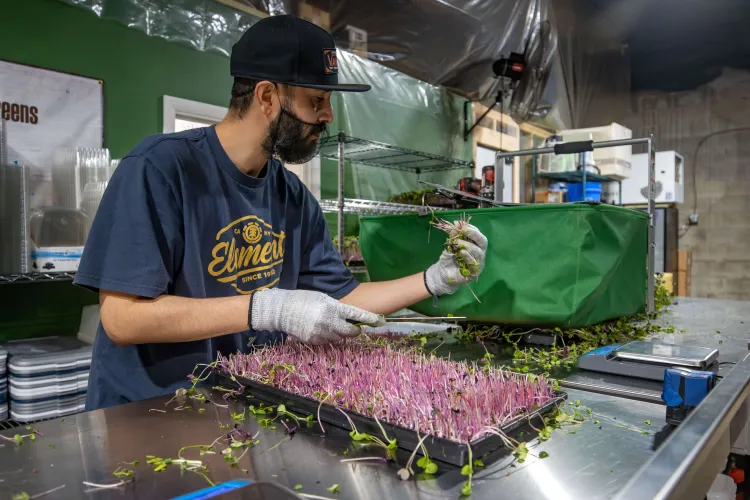
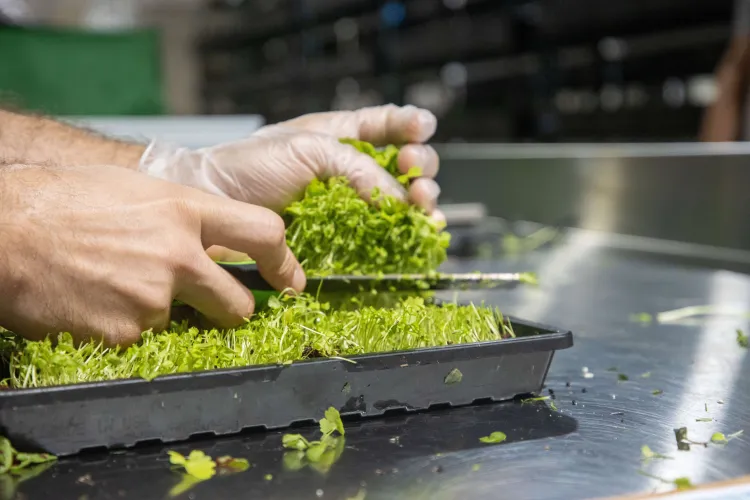
Cleaning the Quick-Cut Greens Harvester
Other Cleaning practices include:
- Knives get cleaned every day
- Table tops get wiped down between crop harvests
During our visit, the Mirandas decided to avoid harvesting greens that droop over the edge of the tray. With minimal yield loss and time savings through elimination of a harvest step, this decision also helps to reduce produce safety risk.
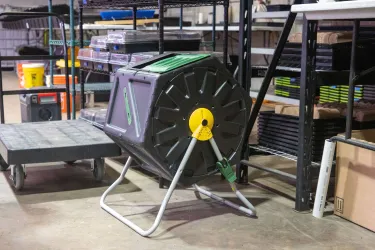
Another unique tool that is used is a compost tumbler to make mixed products! It was purchased new, and cleaned and sanitized before use. Through routine cleaning, it maintains cleanliness and has been working well. Another option for a small scale tumbler could be the use of a plastic cement mixer.
Water Circulation System
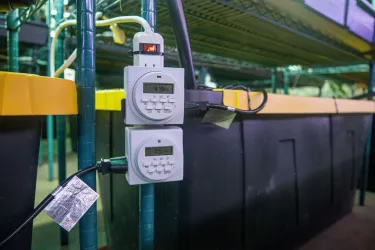
The growing systems at Legacy Greens are described as an “automated watering system” which uses a pump on a timer that fills the top tray, floods the growing medium and trickles down to the next shelf, and recirculates from the collection tank at the bottom. The nutrients for the plants come from a nutrient solution (nutrients added to water) which is a general hydroponic blend and provides consistent yields. “Being automated saves a lot of time, saves water and eliminates splashing.” Watering happens at 5 pm and 6 pm. This lets them dry down ahead of the next day's harvest in the morning and keeps moisture down in the canopy during the day. Allowing the trays to drain down over the night also minimizes dripping when they are pulled out for harvesting. With a system of their size (3,000 sq ft) they are able to harvest 600 trays per week. The nutrient solution stock tank is also on a timer to circulate for at least an hour every day to keep it fresh. Each rack reservoir gets topped off with additional water daily.
“Making the capital improvements for good tables and equipment was an upfront cost, but in the scheme of things, wasn’t that much and provided peace of mind that we’re doing it right.”
Water Reservoir Change
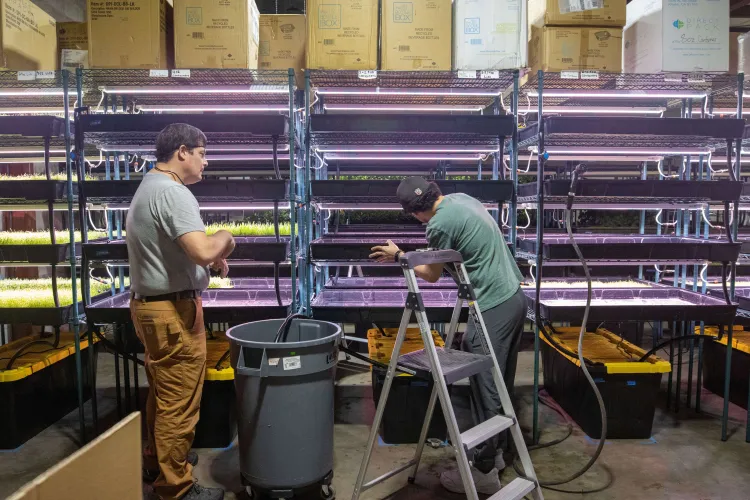
After harvest, which is typically every 6-8 weeks, a rack system gets thoroughly cleaned. This includes wiping the flood trays, cleaning the tank, cleaning the pump, making sure everything is working well with no clogs, etc. The system then gets recharged with freshly balanced nutrient solution. They don’t use anything fancy for cleaning, simply a sponge with a scouring pad and a common detergent. Everything is allowed to dry completely after the cleaning. Since the system is cleaned frequently, they can stay ahead of scaling and stubborn stains, so it's never a very difficult task. It is a task that simply needs to be accepted as important, get scheduled, and get done. This also serves as a clean break in production ahead of the next batch or lot of produce.
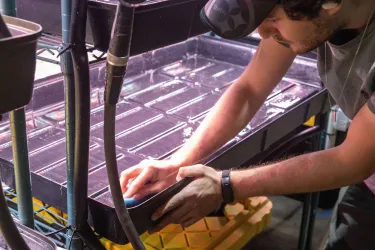
Cleaning of the Water System AKA a "Rez Change"
Legacy Greens share how they clean their system between batches of microgreens on their indoor hydroponic farm.
Parting Thoughts
In reflection on growing a business, Jordan shares, “Don't be afraid to try things! It’s never going to be perfect, but as long as you're making progress you’re on the right track.” He really enjoys the process of building a business and working for himself. “Keep an open mind to everything and new opportunities.”
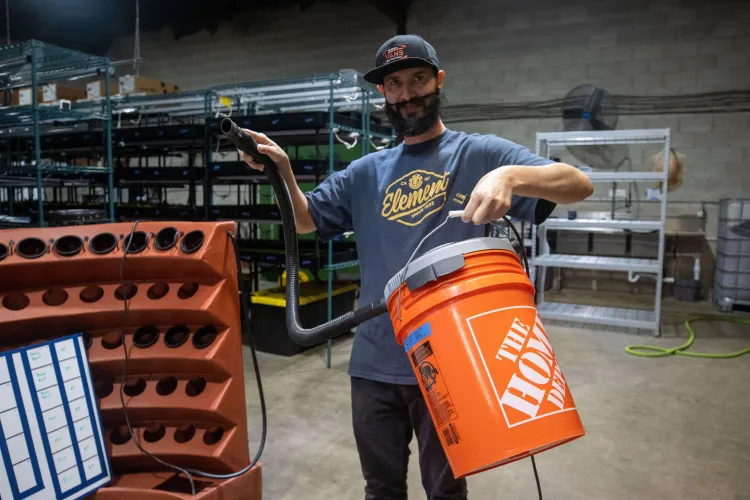
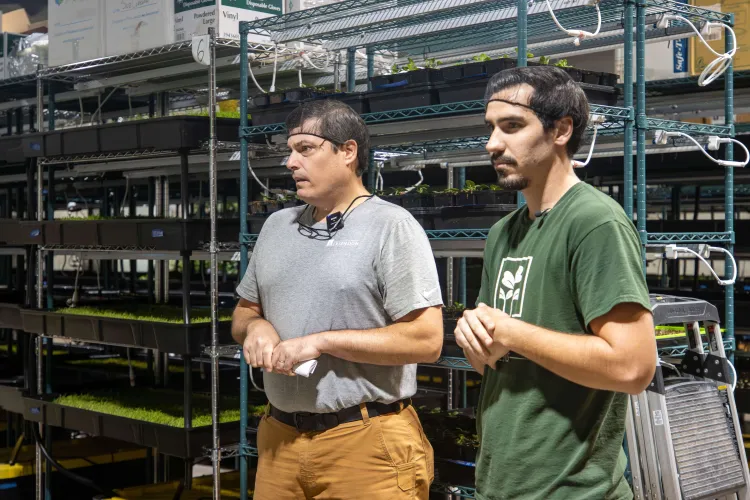
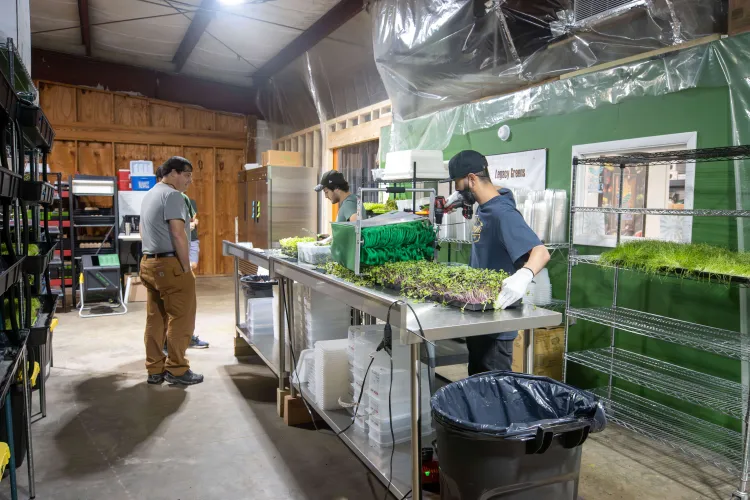
Jordan Miranda's advice for beginning growers:
“Expect the unexpected, and just buckle up for the ride!”
Share This Post
https://go.uvm.edu/legacygreens